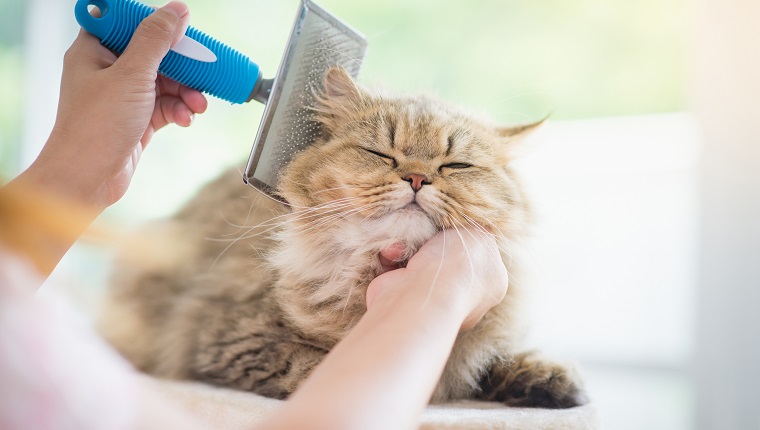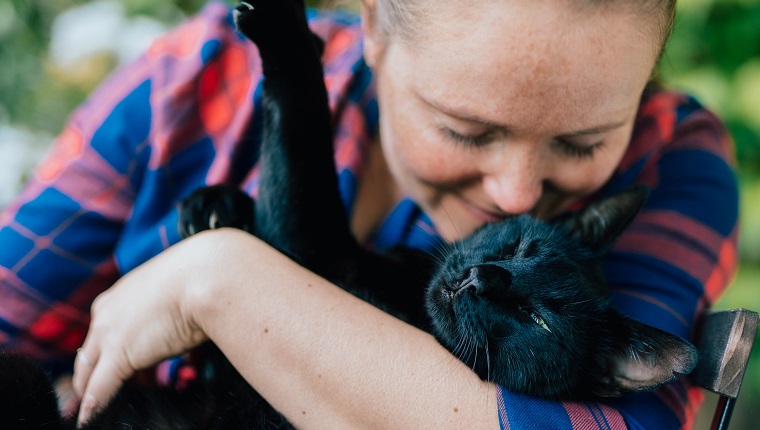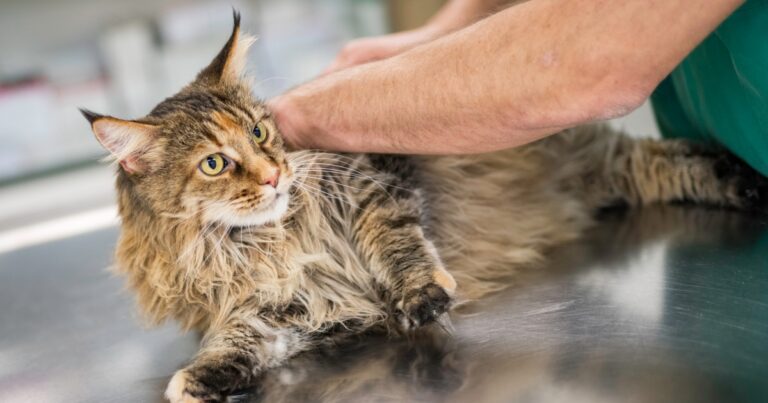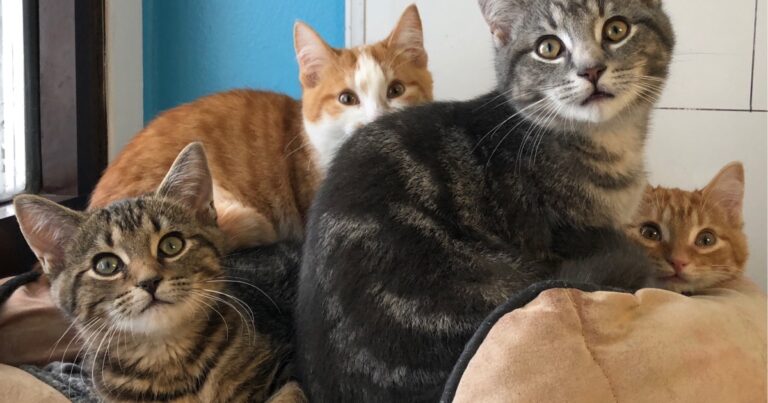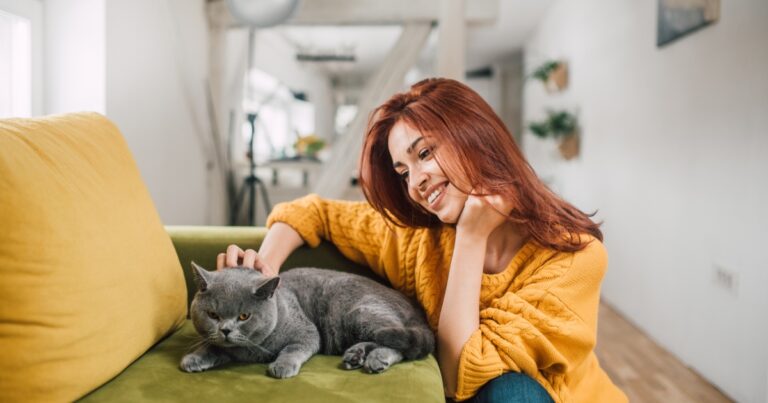❇︎Affiliate Statement: The services and products that I may link in this article are ones that I use myself and am proud to recommend. If you follow one of my links please be aware that I will receive a small commission from Amazon or other vendors. I’d also like to say a big Thank You for your trust if you do.
You love cats. We get it. So do we! Once you fall in love with and adopt a cat (or a pair of bonded kittens), we don’t blame you if you start fantasizing about adding more feline friends to your family. Before you know it, you could easily become the stereotype of a “crazy cat lady,” or, in less gendered terms, a “feline fancier.” While multi-cat households are not uncommon, they might not be in your best interest or the best interest of the feline friends you love. Animal hoarding is a serious issue, one that pet advocates work tirelessly to eradicate. But how do you know how many cats are too many? Is there a hard and fast number?
We’re going to explore when a pet parent crosses the line into excess. Then, we’ll look at the potential problems that may arise in a multi-cat household. Finally, we’ll give you some guidelines to help determine the right number of cats for you.
Is there such a thing as too many cats?
The number of cats that can be considered “too many” varies from person to person, as individual circumstances, living arrangements, and personal preferences play a significant role. What might be manageable for one person could be overwhelming for another. However, it’s important to acknowledge that there is a point where the number of fur babies can become problematic, both for the owner and the cats themselves. That number, according to experts like veterinarian Dr. Justine Lee, appears to be no more than six. Beyond that, and you start to encounter a myriad of issues that pose a health and safety risk not only to your four-legged friends but to yourself as well.
Why too many cats can be problematic
There are many factors that come into play when trying to pinpoint an excessive number of cats. The following are just a few of the consequences of taking in too many feline friends.
Quality of care
As the number of cats increases, it becomes increasingly challenging to provide each fur baby with the necessary individual attention, proper nutrition, and veterinary care they deserve. Feline friends thrive on social interaction and mental stimulation, and overcrowding can lead to compromised well-being and increased stress levels.
Living conditions
Space constraints can negatively impact a cat’s quality of life. Your fur babies need room to exercise, explore, and establish territories. An overcrowded environment can lead to territorial disputes, aggression, and behavioral issues.
Financial burden
Caring for multiple cats involves substantial financial responsibilities, including food, litter, grooming supplies, veterinary expenses, and unexpected medical costs. As the number of fur babies increases, so does the financial strain, potentially compromising the ability to provide proper care and necessities for all felines involved.
Health and hygiene
With a larger number of cats, maintaining proper hygiene can become more challenging. Tasks like litter box cleaning, grooming, and taking preventive measures against parasites and diseases become more demanding and time-consuming. Neglecting these essential tasks could result in unsanitary conditions and health risks for both the cats and the owner.
Behavioral issues
Multiple cats can result in behavioral issues, including aggression and fighting.
How to determine the maximum number of cats you should have
Determining the ultimate number of cats you should have depends on various factors, including your ability to provide adequate care and the living environment. The following considerations can help guide this decision.
Space
Evaluate the available living space and ensure each cat has enough room to roam, play, and relax comfortably. A spacious home with separate areas for litter boxes, food, and resting places can better accommodate multiple cats.
When it comes to the ideal number of litter boxes to have, you may also face a space issue. Purina recommends “one box per cat, plus one extra. So if you have two cats, you should have three boxes.”
Time and attention
Consider the time and energy required to meet each cat’s social, emotional, and physical needs. All pets require interactive play, grooming, and regular veterinary check-ups. Ensure you have enough time to dedicate to each fur baby individually.
Financial resources
Assess your financial capabilities to provide for all the cats’ necessities, including food, litter, flea and tick treatment, veterinary care, and unexpected expenses. It’s crucial to have a financial cushion to handle any emergencies that may arise.
Personal well-being
Consider your own well-being and stress levels. Owning multiple pets requires dedication, patience, and the ability to manage any potential challenges that arise. Be honest with yourself about your own limits and capabilities.
Responsible cat parenting
While the number of cats that can be considered “too many” varies from person to person, it is essential to prioritize the welfare and well-being of each furry friend. Responsible pet parenting involves ensuring adequate care, attention, and resources to guarantee the happiness and health of your feline companions. Remember, it’s better to provide a loving and comfortable environment for a manageable number of pets than to overcrowd and compromise their quality of life.
FAQs:
Q: Is there a magic number for how many cats a person can have?
A: The number of cats that can be considered “too many” varies, but according to experts, it appears to be no more than six.
Q: What are some problems that can arise in a multi-cat household?
A: Problems may include compromised quality of care, increased stress levels, territorial disputes, aggression, financial strain, hygiene issues, and behavioral problems.
Q: How can I determine the maximum number of cats I should have?
A: Consider factors such as available space, time and attention, financial resources, and your own well-being to determine the right number of cats for you.
Advice:
1. Prioritize the well-being and care of each individual cat.
2. Ensure you have enough space to accommodate all cats comfortably.
3. Dedicate adequate time and attention to each cat’s social, emotional, and physical needs.
4. Assess your financial resources and ability to provide for all the cats’ necessities and unexpected expenses.
5. Be honest with yourself about your own capabilities and stress levels.
6. Remember, it’s better to provide a loving and comfortable environment for a manageable number of cats than to overcrowd and compromise their quality of life.

Becca The Crazy Cats Lady is an experienced and knoweldgeable cat owner with years of experience caring for a multi-cat household. She curates, writes and shares cat content at https://CrazyCatsLady.com.


